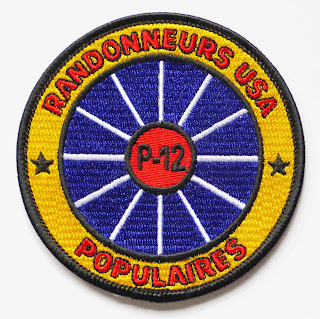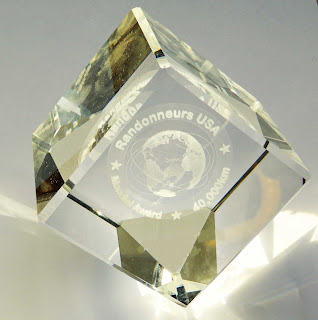On the back, they list each program and when it was created.
Many of the events are domestic (France), such as the Fléchette Vélocio (for younger riders) and the Relais de France. But for the international ones, it's interesting to compare among countries, and trends. Also to see the rich tradition of event types.
BRM Events
- The US is fourth overall in number of (finishers') kms over the past six years; Japan is first.
- We were at 1,823,700 for 2018, but 2,219,000 for 2014, the previous PBP year.
- The US is fifth overall (after India) for 2018.
The Flèches Nationales events are the flèche events outside of France. In France, the event is the Flèche Vélocio.
- Max team distance was 635 km in France, 642 km in Sweden, 639 km in Slovenia; the highest in the US was 421 km (Flèche NW). As we've seen, this reflects two different philosophies of riding the flèche.
- Japan had the greatest number of teams (65), followed by the US (56).
- The US had the greatest number of women (44, followed by Japan with 40), and by far the greatest number of tandems (10, followed by Canada with 2 and Sweden with 1 - no other countries had tandems).
2019 will be the first year RUSA regions (seven of them) will be offering a Trace.
- Riders of the Trace are termed traceurs at least in the Results.
- The Traces Nationales were started in 2010.
- In 2018, France and three other countries had Traces: Canada, the UK, and Romania, with team counts in the single digits (52 teams in France).
- In 2019, additional countries are Japan and the US.
- Totals outside of France include 15 women and one tandem, according to Sophie, who administers the Traces Nationales.
- Team distances spanned 203km to 234km ... so no team was riding a Flèche distance (360km) under the rubric of a Trace (which is the possible upper limit under the rules).
- As of 2018, teams are no longer prohibited from riding between 10pm and 6am, but the intent is that the Trace is a daytime event.
- It will be interesting to see how our Trace teams and organizers fare, and how popular this event format will be.
These are 600 km+ permanents sanctioned by the ACP, requiring 10,000 m. (31,000 ft.) of climbing, with a time limit of 60 hours. The ACP official who created this program lives in a mountainous region, aiming to inspire riders with a climbing, backcountry challenge.
- There are currently 59 routes, including 16 with US ownership and 9 with Spanish ownership.
- Only 2 new routes were created in 2018, one each in US and Spain.
- In 2018, there were 24 finishers in both France and the US (placing fourth in the ratings). Spain had 93 finishers. [One fourth of the finishers came from the Colorado Front Range SR 600.]
- That finisher count in France made it a "very small year" for the program in France, historically a big draw for riders. Five of the 24 finishers of French routes chose the Tourist option.
- There is a photo of riders on the Lone Star Road route in Humboldt County, CA, a route that is 30% gravel, it says.
- These details - as with the Trace - courtesy of Sophie Matter, who created and administers this program.
- - -
It's always good to look beyond our own borders to see the difference in styles, the growth trends, and the scale of randonneuring in the world!
-jle













